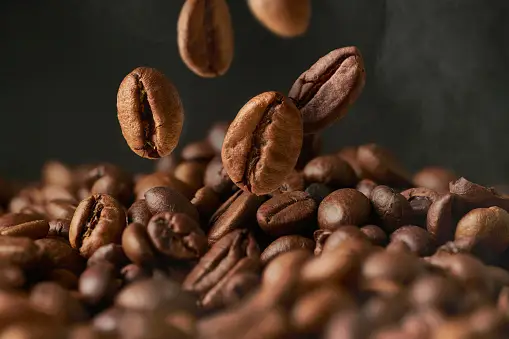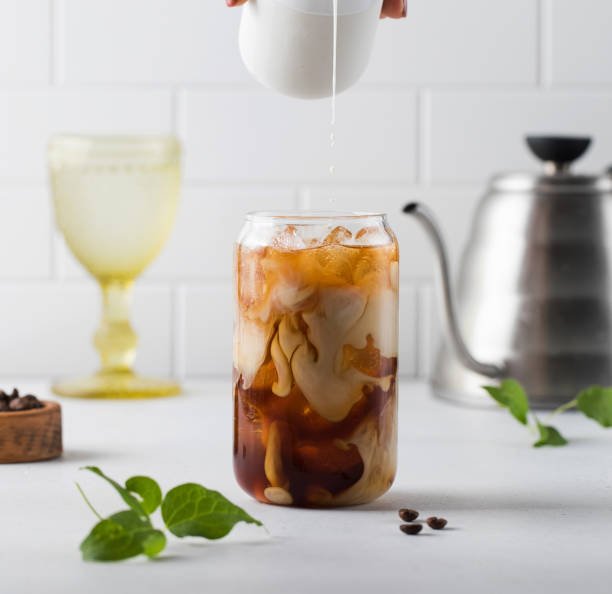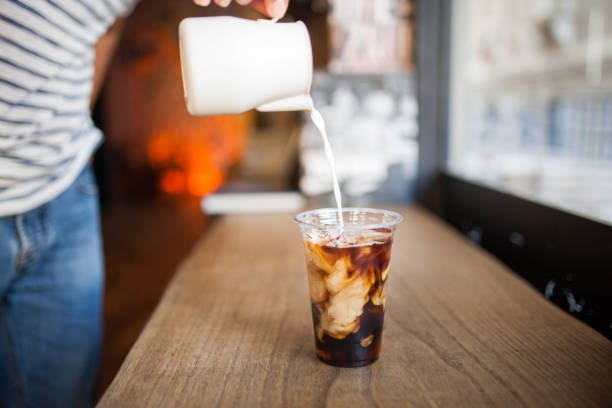In a world where every sip counts, the rise of cold brew coffee has become more than just a trend—it’s a movement. For coffee enthusiasts seeking an alternative to the daily grind of hot brewed beverages, cold brew offers a smooth and bold flavor profile that is conquering taste buds far and wide. The gentle extraction process of cold brewing creates a less acidic and remarkably refreshing elixir, setting it apart from its steamy counterpart.
Stepping into the realm of cold brew isn’t merely about making a drink; it’s about crafting an experience—one that elevates your senses with each chilled drop. As you trade heat for patience in the brewing process, you unlock a new world of nuances and subtleties in your cuppa. From choosing the right beans to mastering the art of filtration, perfecting your cold brew game is an art form blending science, skill, and creativity. So gear up, as we unravel 8 tips that promise not only to enhance your journey through icy java wonderland but also pave the way to mastery one measured pour at a time.
Table of contents
Choosing the Right Beans

Stellar cold brew
When it comes to crafting a stellar cold brew, selecting the right beans lays the foundation for a delectable coffee experience. Opting for coarsely ground, high-quality coffee beans is paramount in achieving a flavorsome and well-balanced cold brew. Coarse grounds are favored for cold brew as they allow for slow extraction, resulting in a smoother and less acidic final product. High-quality beans ensure that your cold brew carries nuanced flavors and aromatic notes that shine through even when chilled.
Experimenting with Different Types or Blends
For those diving into the world of cold brew, experimenting with different types or blends can be an exciting journey of discovery. Dark roast lovers may find joy in exploring Colombian Supremo or Ethiopian Yirgacheffe beans for their rich and bold profiles that stand out amidst the smoothness of cold brew. On the other hand, fans of brighter flavors might revel in the citrusy characteristics of Kenyan AA or the chocolatey undertones of Guatemalan Huehuetenango when steeped into a refreshing cold infusion. The variety available allows for customization to suit personal taste preferences and elevates the cold brew experience to new heights.
Whether you enjoy nutty undertones, fruity accents, or chocolatey richness in your cup, choosing beans tailored to your palate ensures every sip is an adventure in flavor exploration. Embracing the diversity of coffee origins and blends not only enhances your cold brew game but also opens doors to a world of sensory delights waiting to be brewed into existence. So, next time you reach for that bag of coffee beans, remember that selecting wisely sets the stage for a truly exceptional glass of chilled perfection.
Perfecting the Brew Ratio
For cold brew aficionados, getting the coffee-to-water ratio just right is like composing a perfect symphony of flavors. The ideal ratio often hovers around 1:4 or 1:5 (coffee to water), but don’t be afraid to tweak this based on your taste preferences. If you prefer a richer and more potent brew, leaning towards a 1:4 ratio might be your ticket. On the other hand, those who enjoy a milder, smoother taste may opt for a 1:5 ratio. Experimentation is key here—taste-testing along the way will help you fine-tune your ideal mix.
When considering adjusting the brew ratio, take into account the characteristics of your chosen beans. For example, if you are working with a particularly bold and intense dark roast, you might want to use slightly more water to balance out its potency. Conversely, a light roast with delicate fruity notes could require less water to let its flavors shine through. Understanding how different beans interact with varying ratios can elevate your cold brew game by unlocking unique taste profiles in every batch.
Remember that nailing the perfect brew ratio isn’t just about measurements—it’s about finding that sweet spot where your taste buds sing with delight. Don’t hesitate to play around with different ratios until you discover one that perfectly suits your palate and showcases the best qualities of your favorite coffee beans.
Mastering Brewing Time
Brewing time is a crucial factor in determining the taste and strength of your cold brew coffee. The longer you steep your coffee grounds, the stronger and potentially more flavorful the brew will be. However, brewing for too long can result in an overly bitter or acidic taste that may not be to everyone’s liking. To find the perfect balance, it’s essential to experiment with different brewing durations based on your personal preferences and the characteristics of the beans you’re using.
For those who enjoy a milder cold brew, a shorter brewing time of around 12-14 hours may be ideal. This duration still allows for extraction of flavors from the beans without overdoing it. On the other hand, if you prefer a bold and robust cold brew, extending the brewing time to 16-18 hours can intensify the flavor profile without crossing into bitterness. It’s recommended to start with a standard brewing time and gradually adjust as needed until you discover your perfect cup.
Factors to consider
Remember that factors like bean origin, roast level, and grind size can influence how long you should brew your cold brew coffee for optimal results. Experimenting with different brewing times not only allows you to tailor your drink to your taste preferences but also helps you appreciate the nuances of various beans and blends. By mastering the art of brewing time, you can elevate your cold brew experience and unlock a world of flavor possibilities in every sip.
Optimal Brewing Temperature
When it comes to cold brew coffee, maintaining an optimal brewing temperature is crucial to achieving a smooth and flavorful result. Unlike hot brewed coffee, which relies on heat to extract flavors quickly, cold brew requires time at a lower temperature to slowly draw out the coffee’s best qualities without bitterness. The recommended brewing temperature for cold brew coffee is typically between 70-35°F (21-4°C). This gentle brewing process allows for a milder extraction that highlights the natural sweetness and complexity of the beans.
To ensure consistent temperature control throughout the brewing process, consider using a refrigerator or dedicated cold brew maker with built-in temperature regulation. By keeping your brewing vessel chilled, you prevent rapid extraction caused by higher temperatures, which can lead to over-extraction and unwanted bitter notes in your final brew. For those who prefer experimenting with different flavors and profiles, adjusting the brewing temperature slightly up or down can also yield unique results. A cooler temperature might enhance bright, fruity notes, while a slightly warmer setting could intensify chocolatey or nutty undertones.
Maintaining the right brewing temperature not only impacts the taste but also influences the overall quality of your cold brew coffee. By being mindful of this aspect of the process and implementing strategies for precise temperature control, you can elevate your cold brew game and unlock a world of nuanced flavors in every sip.

Flavorful Additions and Enhancements
One of the joys of cold brew coffee lies in its versatility to blend with a variety of flavors and enhancements, taking your brewing experience to a whole new level. Incorporating ingredients like cinnamon, vanilla, or citrus zest can elevate your cold brew from delightful to exquisite. Swirl in a hint of ground cinnamon for a warm spice undertone, infuse with a touch of vanilla extract for a sweet aroma, or zest up your brew with fresh citrus peels for a zingy kick – the possibilities are as limitless as your imagination.
For those who enjoy their cold brew on the sweeter side, experimenting with different sweeteners like honey, maple syrup, or simple syrup can subtly enhance the flavor profile without overpowering the coffee’s natural taste. Alternatively, if you prefer dairy-free options, consider adding almond milk, coconut milk, or oat milk for a creamy texture that complements the smoothness of cold brew beautifully. These additions not only offer an opportunity for personalization but also open doors to discovering unique flavor combinations that suit your palate.
By blending traditional spices or aromatic extracts alongside alternative milks or sweeteners into your cold brew concoction, you can create signature beverages that cater precisely to your taste preferences. Whether it’s a refreshing citrus-infused cold brew on a hot summer day or a comforting vanilla-spiced creation during winter months, these flavorful enhancements provide endless opportunities to craft bespoke cold brew creations that will have both you and your guests coming back for more.
The Art of Cold Brew Filtration
Once your cold brew coffee has steeped to perfection, the next crucial step is filtration. This process is essential for removing any sediment or grounds, ensuring a smooth and clean final product. Various techniques can be employed for efficient filtration, with each method contributing to the clarity and quality of your cold brew concentrate. One popular method involves using cheesecloth as a primary filter. By lining a strainer with several layers of cheesecloth, you can effectively strain out any coarse particles, resulting in a velvety texture that’s perfect for enjoying straight or diluting with water or milk.
While some home baristas opt for DIY solutions like cheesecloth or fine-mesh sieves, investing in specialized tools designed for cold brew filtration can elevate your brewing experience. Paper filters specifically made for cold brew systems provide an extra level of filtration, capturing even the finest sediment and producing an exceptionally clean brew. Alternatively, commercial cold brew systems often come equipped with built-in filters that streamline the filtration process, making it hassle-free and ensuring consistent results every time. These tools not only enhance the clarity of your cold brew but also simplify the cleanup process, saving you time and effort.
By paying attention to the filtration stage of cold brew preparation, you can achieve a concentrate that’s rich in flavor and free from unwanted grittiness. Experimenting with different filtration techniques allows you to tailor the consistency of your cold brew to suit your preferences, whether you prefer a lighter mouthfeel or a bolder flavor profile. Whether you choose traditional methods like cheesecloth or opt for modern tools like paper filters or specialized systems, mastering the art of filtration will undoubtedly take your cold brew game to new heights by delivering consistently delicious results sip after sip.
Serving and Presentation Tips
Serving cold brew coffee is not just about pouring it into a glass; it’s about creating an experience from the first glance to the last sip. To elevate your cold brew game in terms of presentation, consider serving your cold brew in distinct glass vessels or mason jars that showcase its rich color and clarity. Clear glasses allow the drinker to appreciate the beauty of the coffee concentrate and add a touch of sophistication to your serving style. For an added aesthetic appeal, you can garnish your cold brew with coffee beans, citrus twists, or even edible flowers for a visually enticing look.
The aroma of cold brew plays a significant role in enhancing the overall drinking experience. When serving your cold brew, consider using sensory elements by incorporating elements like aromatic spices at the presentation table. A simple cinnamon stick resting on the rim of a glass or a sprig of fresh mint can infuse subtle yet inviting scents into the air as you serve your beverage. Additionally, be mindful of the temperature at which you serve your cold brew; ice-cold temperatures can dampen aromas, so allowing it to sit for a few minutes before sipping can help unlock its full flavor potential.
Moreover, think beyond traditional serving methods when presenting your cold brew. Experiment with unique serving techniques such as nitrogen-infused taps for a creamy texture or opting for trendy oversized ice cubes to prevent dilution while adding flair to your drink. By paying attention to both visual appeal and olfactory stimulation, you can turn any regular cup of cold brew into an elegant and multisensory experience that will impress even the most discerning coffee enthusiasts. Remember, perfecting your cold brew game goes beyond brewing techniques; it involves every aspect of how you present and serve this beloved caffeinated delight.

Perfecting Your Cold Brew Coffee:
A Delicious Journey Worth Embarking on mastering the art of cold brew coffee involves a blend of precision and creativity. Remember, start with high-quality, coarsely ground beans to lay the foundation for a flavorful brew. Perfect the golden ratio of coffee to water, keeping in mind that experimentation is key to finding your ideal taste profile. Explore different brewing times like a seasoned barista – it’s amazing how a few hours can transform your cup from bold to mellow.
To avoid bitterness, always keep things cool during the brewing process. Embrace your inner mixologist by infusing flavors like vanilla or cinnamon and know that sweeteners don’t have to be just sugar – try some creamy oat milk for a twist. Filter your concentrated elixir until it shines like liquid amber, using tools fit for a caffeine alchemist. And finally, when it’s showtime, present your creation with flair – cold brew isn’t just a drink; it’s an experience.
Conclusion:
In conclusion, remember these tips as you venture into the realm of cold brew coffee magic. Don’t be afraid to adjust and personalize because at its core, making coffee should bring joy and curiosity into every pour. So go forth with confidence, armed with knowledge and enthusiasm – may every sip embody the dedication and craft you put into perfecting your cold brew game!






